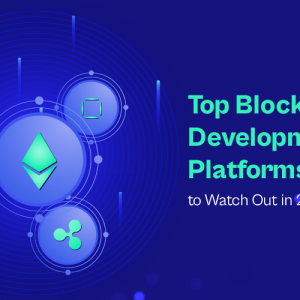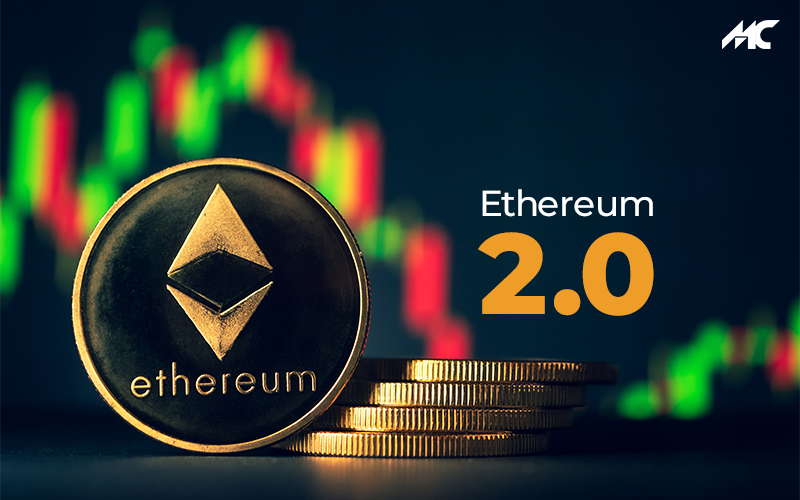Ethereum 2.0: An Overview To Uncover Its Future
The Countdown Begins as Ethereum is All Set to Roll Out in 2019!
Ethereum is an open-source & blockchain-based distributed computing platform for building decentralized apps. The idea of replacing internet third parties with the integration of blockchain technology inspired Vitalik Buterin, Ethereum Founder to develop a platform using a generalized scripting language for application development. This smart contract platform is based on Ether, a popular cryptocurrency and it offers tools to create your cryptocurrency.
A Flashback to Ethereum Updates
The proposal for Ethereum was being made in 2013 and it significantly went live in 2015 after a crowd sale was launched to raise funds of approx 3,700 BTC i.e a sum of over $2.3 million within twelve hours. However, the development of Ethereum blockchain has been in progress since 2018 and its first phase will be released by the end of the year 2019. Since the introduction in 2015, the world witnessed the release of Ethereum in these four stages:
- Frontier: The initial structure at a launch time.
- Homestead: The structure that attained highlights in 2018.
- Metropolis: The currently existing phase that goes around two hard forks, Constantinople & Byzantium.
- Serenity: The most awaited release corresponding to the final stage that has been categorized into three phases for a period from 2019-21 for every year. It might include Plasma, Raiden, & some other solutions.
Factors Favouring The Need For Ethereum 2.0
The Ethereum founder designed this platform as a decentralized virtual machine that can execute codes in exchange for a fee. Though Ethereum was initially portrayed as a decentralized world computer with a slight resemblance to Google Play, this platform has been defined as an app store where anyone can publish their Dapps without being run necessarily on a blockchain.
Ever since the arrival of Ethereum, developers were excited to use this platform to create Dapps. However, it emerged as a big setback as apps from categories of financial predictions & estimations such as Augur & CryptoKitties failed to engage active users or as predicted user base of consumer-based apps from platforms like Facebook & Google. The current user base of Dapps goes merely goes to the count of 3,000 users within a timeline of 24 hours. In addition to this, the downfall of the cryptocurrency market indicates that Dapps failed to grab the traction with downgrading user engagement from a mark of 51% of Bitcoin market share to 17% at present.
Since Ethereum continued to emerge with some major shortcomings encircling underlying factors resulting in inconsistency in speed & scalability, Ethereum 2.0 will be released to deal with such issues alongside keeping up with decentralization methodology. The two key objectives of Ethereum updates are mentioned as:
- Bring a proof-of-stake consensus mechanism to exclude the need for costly & unnecessary proof-of-work mining.
- More focused on sharding to enhance the speed & data throughput of ETH transactions.
If you’re still wondering about the question of choosing why Ethereum 2.0 then these reasons will surely convince you to consider this new version:
Performance: The upcoming version stay ahead in terms of performance in terms of transaction speed per second. Currently, Ethereum can progress to process only 25 transactions per seconds and that turns out to be non-sustainable once it goes to the mainstream.
In such a scenario, Visa wins a race with its capability of performing 24,000 transactions every second even though roughly 4,000 tps are required at peak hours.
Enhanced security: Most Ethereum developers will be switching from PoW to PoS as the upcoming version will be more secure with the potential of eliminating approx 51% attack problem.
The vulnerability to attacks is comparatively higher with PoW than PoS as it is more decentralized than pure PoS.
Proof-of-Work vs Proof-of-Stake
PoW: It occurs when miners intend to resolve exceptionally tough math problems. It turns out to be more expensive if you get a wrong answer as finding a solution is a guessing game that restricts miners to discover the correct one even though it is simple. It is not possible to cheat in this process as the system uses real-world resources to come up with these solutions.
PoS: PoS takes place when a miner takes a stake or lock up or use all coins for the verification of block of transactions. It is a fact that the solving cryptographic calculations in this system is easier & being a miner you just need to justify that you own a certain percentage of coins in a given currency.
Improved Environment-friendly Approach With Ethereum 2.0
With Ethereum 2.0, it will be easier to move from Proof of Work (PoW) to Proof of Stake (PoS). Although PoS punishes you for minor mistakes, it is very simple to get the right answer that makes it favourable for beginners. However, PoS will turn out to be more expensive once you get a wrong answer as it will be a punishment for it.
On the other hand, getting the right answer is quite tough & expensive for newbies, PoW will reward with every right answer. But alas! PoW consumes heavy power and that’s why it won’t be an environment-friendly option to go for.
According to a researcher at Ethereum, Ben Edgington penned down to share a write up mentioning, “Using a platform like this eventually enabled developers to breakdown the constraints of Mainnet & think beyond the limitations imposed by the existing network.”
Key Takeaways
As per the Ethereum updates, it will be launched in multiple stages with a major focus on The Beacon chain, fork choice, deposit contract, & Honest Validator in Phase 0 and Custody Game & Shard Data Chains in Phase 1. Now, what’s running around your mind? Don’t just pile up those questions regarding Ethereum 2.0 as you’ve countless things to discover about this platform. You can also check out some sharding FAQs to improve your knowledge. Keep reading to stay updated!
-

 Top Blockchain Development Platforms to Watch Out in 2023
Top Blockchain Development Platforms to Watch Out in 2023 -

 How Blockchain Bridges Are Beneficial To Businesses?
How Blockchain Bridges Are Beneficial To Businesses? -

 Everything You Need to Know About the Latest Ethereum Merge
Everything You Need to Know About the Latest Ethereum Merge




